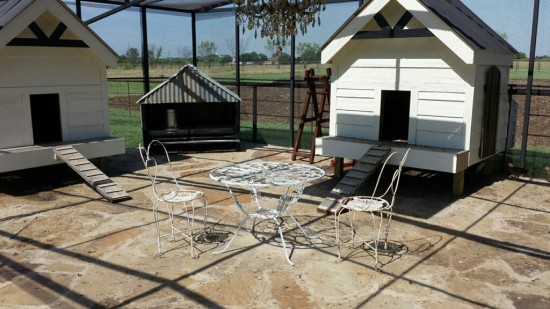Growing up in New Mexico, we only ate eggs from the chickens that we raised ourselves. In fact, I never had a store-bought egg until I left home, sixteen years later. If you’ve ever had farm-fresh eggs, you just know the difference. There’s no comparison! But honestly, it was the love and hard work of caring for our chickens that made those edible pieces of heaven even tastier. My responsibility was the chicken coop, and whether it was one hundred degrees or thirty degrees outside, I collected the eggs, cleaned out the coop, and fed the chickens every morning before school. To this day, I can still remember every nook and cranny of that chicken coop we built with our bare hands.
Some of my fondest childhood memories were centered on our small farm. It shaped us—taught us the value of life, taught us that effort and care lead to positive results, and it taught us to appreciate today because there are no promises tomorrow.
Now that I’m a parent, I value my upbringing even more so, and I try to seek out small ways of bringing those life lessons to my daughter. I don’t want her to become complacent with city life. I don’t want her to go to the grocery store and not appreciate how the produce gets there. She will know the value of life. She will know how to work hard and appreciate what she has.
And that’s why we decided to build a chicken coop for Darlington. But what started out as a coop large enough to give her room to play with the chickens—allowing them to be free range without becoming a free lunch for the coyotes and water moccasins—turned into something far more than just a basic coop. This month, the chicken coop is Part X of our DIY Ranch Design Series.

Right from the get-go, there were a few things that needed to be determined.
Question One: How big would the coop need to be in order to fit two chicken houses, a clawfoot tub, and a dining table and chairs?
Answer: 400 square feet
Question Two: How do we secure the coop so predators can’t get in?
Answer: Make sure there’s a roof, some kind of floor that can’t be dug up, and wire or metal that is thick with small spacing.
Question Three: What types of smart features can be incorporated?
Answer: Concrete or stone floors can be pressure washed, keeping the coop clean. Elevated houses can help keep the chickens protected and safe from flooding.
Question Four: What features can be incorporated to help gather eggs easily?
Answer: Building the houses into the sides of the coop allows for a hatch to stick out of the coop, where someone could unlatch the hatch and easily retrieve eggs.

Once we put all of our parameters in place, it was time for the fun stuff—the design. I wanted the houses to look like mini versions of the ranch house. Unfortunately, this is the same drawing that I gave my contractor. I think he always asks for drawings from me so that he can take them home and laugh. I know I would. Nevertheless, he gets me and we’re always on the same page.

Having rented apartments and homes all over the world, I’ve learned one important thing: Be careful of flat roofs. Unless they have proper drainage, there’s really nowhere for the rain to go and water collecting on the roof equals leaks. Hence my decision was easy, pitched roofs and an open metal structure. With a large oak tree just north of the coop, there will be plenty of shade during the summer.

And of course you can’t have a fancy coop without a chandelier and clawfoot tub! We made sure that the chandelier was covered so there wouldn’t be any electrical issues. Remember, a fancy coop means fancy eggs.

Actually, fancy eggs come from fancy chickens. We wanted a variety of fun chickens to produce some colorful eggs: Araucana Bantams (Easter eggs), Buff Brahama (brown eggs), Welsummers (dark brown eggs), Golden Laced Wynadottes (brown eggs), White Giants (brown eggs), and Dark Cornish (brown eggs).

Now meet the cast of characters. Each chicken has a distinct personality. Ethel is a nonstop clucker while Poncho likes to sit back and watch the group before making a move. I can’t wait for Darlington to get to know them better as she gets older. Have you ever built a coop or thought about building one? What features would you include? Don’t forget to share photos of any design projects you have going on. I’m always looking for new inspiration!
Stay tuned for the next part of my DIY Ranch Design Series.
Until next time,
Toni






